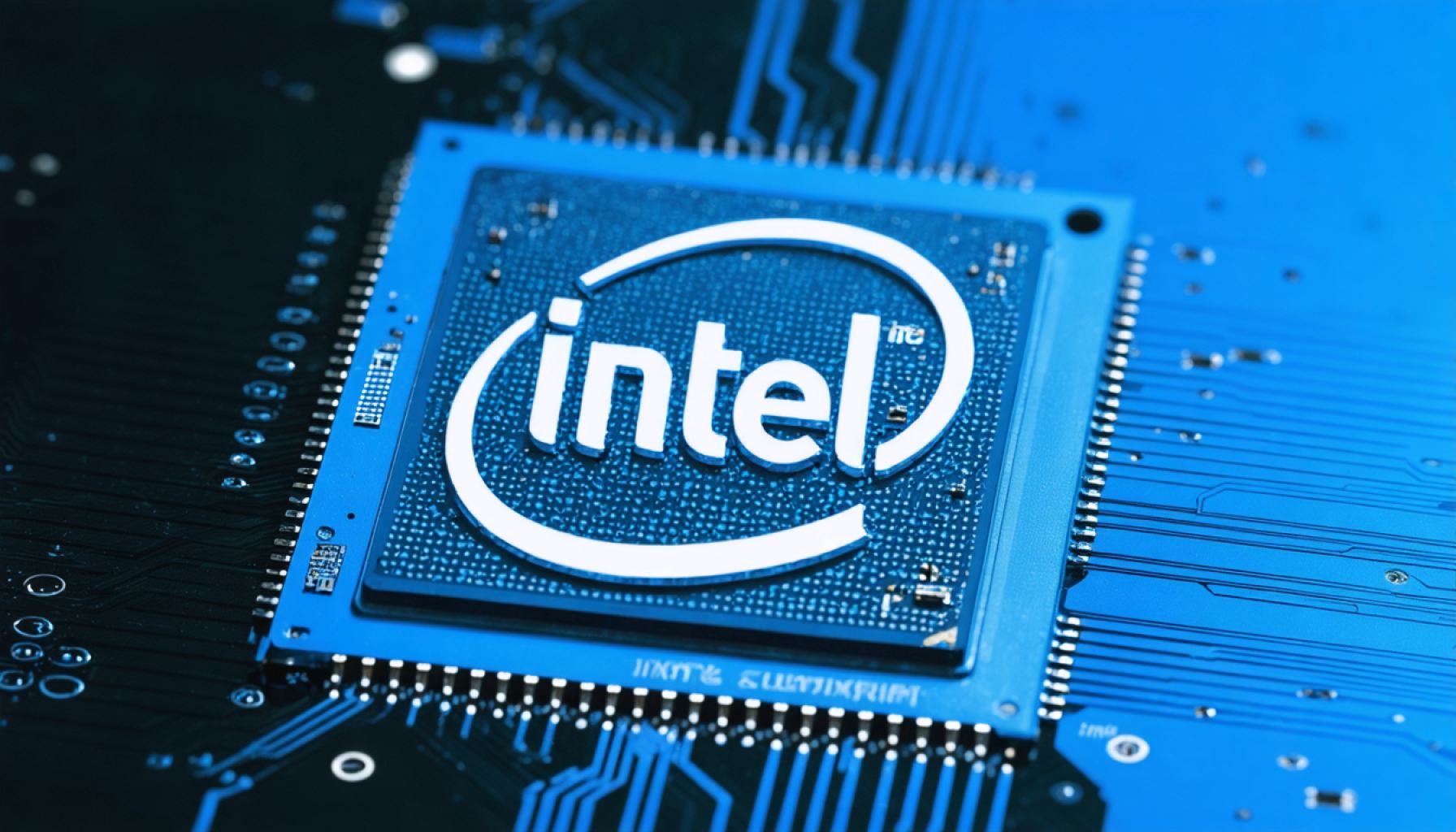- Intel is at a critical juncture, aiming to reclaim leadership in the competitive semiconductor industry.
- CEO Lip-Bu Tan emphasizes a strategic transformation with a focus on AI, GPUs, and edge computing.
- Intel’s roadmap integrates disruptive technologies to boost product delivery and market presence.
- Despite revenue surpassing $12.67 billion, Intel’s market confidence has declined, contrasting with rivals like Nvidia and AMD.
- Internal challenges include organizational stagnation and a lack of fresh ideas, prompting structural and cultural shifts.
- Optimism persists as Tan urges stakeholders to stay engaged amid market fluctuations and restructuring efforts.
- Intel’s success hinges on reigniting innovation, reducing bureaucracy, and fostering new ideas.
- The industry’s broader context underscores the critical need for adaptability and innovation.
Intel, a stalwart in the technology world, finds itself at a crossroads as it struggles to regain its footing in the fiercely competitive semiconductor industry. Recently, during a financial earnings call, CEO Lip-Bu Tan confronted the daunting task ahead, characterizing it as a journey without quick fixes. Intel’s pursuit of transformation is fueled by an intricate blend of ambition and necessity, aiming to restore its dominance amidst strong competitors like Nvidia and AMD.
Employing a player’s mix of patience and innovation, Intel embarks on a renaissance of sorts. The company is navigating this transformation with a robust strategy, targeting both short-term resilience and long-term success. The spotlight shines on emerging technologies—AI, GPUs, and edge computing—as potential saviors in their quest. An invigorated roadmap, periodically reviewed by Tan’s team, seeks to integrate disruptive technologies, accelerating product delivery to the ever-volatile market.
Despite a backdrop of financial improvements, with revenue surpassing expectations at $12.67 billion, the road ahead remains fraught with challenges. Intel’s share performance, declining significantly over the past five years, underscores the market’s waning confidence—a stark contrast to the soaring successes of its rivals. In a revealing internal memo, Tan acknowledges organizational suffocation and the stagnation of fresh ideas as significant barriers, urging a cultural and structural rebirth.
Yet, the echoes of optimism can’t be ignored. “Stay tuned,” Tan advises stakeholders, urging them to hold firm. This narrative of hope harmonizes with Intel’s recent price fluctuations—an upward climb checked by after-hours trading declines, reflecting the turbulent sentiment surrounding the corporation.
As Intel restructures, with Tan taking direct control over pivotal divisions, the key to resurgence lies in reawakening its innovative spirit, streamlining bureaucracy, and encouraging a fertile ground for new ideas. The horizon is laden with potential, but it requires a delicate orchestration of strategic foresight and agile execution to turn potential into reality.
In a world increasingly driven by technological advancement and geopolitical shifts, Intel’s journey serves as a potent reminder: the ability to adapt and innovate is not just advantageous—it’s essential.
Can Intel Reclaim Its Throne in the Semiconductor Industry?
Overview of Intel’s Current Challenges
Intel, a long-time leader in semiconductor technology, is at a critical juncture as it seeks to reclaim its position in a rapidly evolving and highly competitive industry. In recent years, Intel has faced significant competition from companies like Nvidia and AMD, which have challenged its dominance with advances in graphics processing units (GPUs) and innovative chip designs.
Emerging Technologies as Strategic Focus
To navigate its transformation, Intel is focusing on several key areas, including artificial intelligence (AI), GPUs, and edge computing. These technologies are vital components of Intel’s strategy to accelerate product delivery and regain market leadership. This strategic pivot toward AI and edge computing is in line with broader industry trends emphasizing the importance of data processing at the edge, which is crucial for applications like autonomous vehicles and IoT devices.
Real-World Use Cases
– AI Integration: Intel is investing in AI technologies to enhance data center efficiency and support new platforms, providing improved processing capabilities for machine learning applications.
– Edge Computing: With the rise of IoT devices, Intel’s focus on edge computing allows it to provide faster data processing closer to the source, improving responsiveness and reducing latency in critical applications.
Market Forecasts and Industry Trends
The semiconductor market continues to grow, driven by the increasing demand for more powerful and efficient computing solutions. According to industry projections, the market could reach over $1 trillion by 2030, with AI and edge computing as significant growth drivers.
Security and Sustainability
Intel is committed to enhancing the security of its products, addressing vulnerabilities, and ensuring sustainable practices in its manufacturing processes. This focus is essential in maintaining customer trust and meeting environmental goals.
Pressing Questions Answered
– Can Intel regain market leadership?
Intel’s focus on innovation and restructuring can potentially position it strongly against competitors. However, execution will be key.
– What are Intel’s major challenges?
Adapting to new technological trends, overcoming organizational inertia, and regaining stakeholder confidence are significant hurdles.
– How is Intel addressing innovation?
By fostering a culture that encourages experimentation and agile development, Intel aims to overcome past stagnation and spur innovative product development.
Pros and Cons Overview
Pros:
– Strong legacy and extensive resources.
– Focused investment in emerging technologies.
Cons:
– Intense competition from agile rivals.
– Organizational inertia that may hinder swift transformation.
Actionable Recommendations
1. Stay Informed: Follow Intel’s quarterly earnings and product announcements to understand its strategic direction better.
2. Evaluate Investment Risks: Consider both industry trends and Intel’s adaptability when evaluating investment opportunities in semiconductor stocks.
3. Explore Emerging Tech: Businesses should look into how AI and edge computing can enhance their operations, with a particular interest in solutions offered by Intel.
Conclusion
Intel’s journey to rejuvenate its position in the semiconductor industry underscores the importance of innovation and adaptability. By focusing on emerging technologies and fostering a culture of creativity, Intel has the potential to overcome its challenges and regain its former glory.
For more insights into technological advancements and market dynamics, explore Intel.
